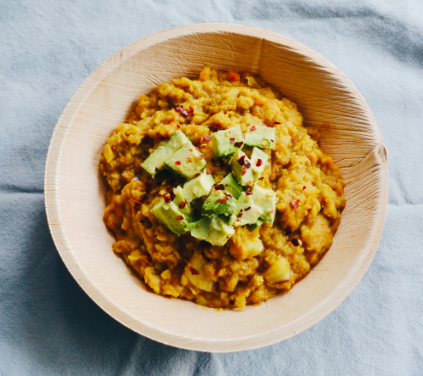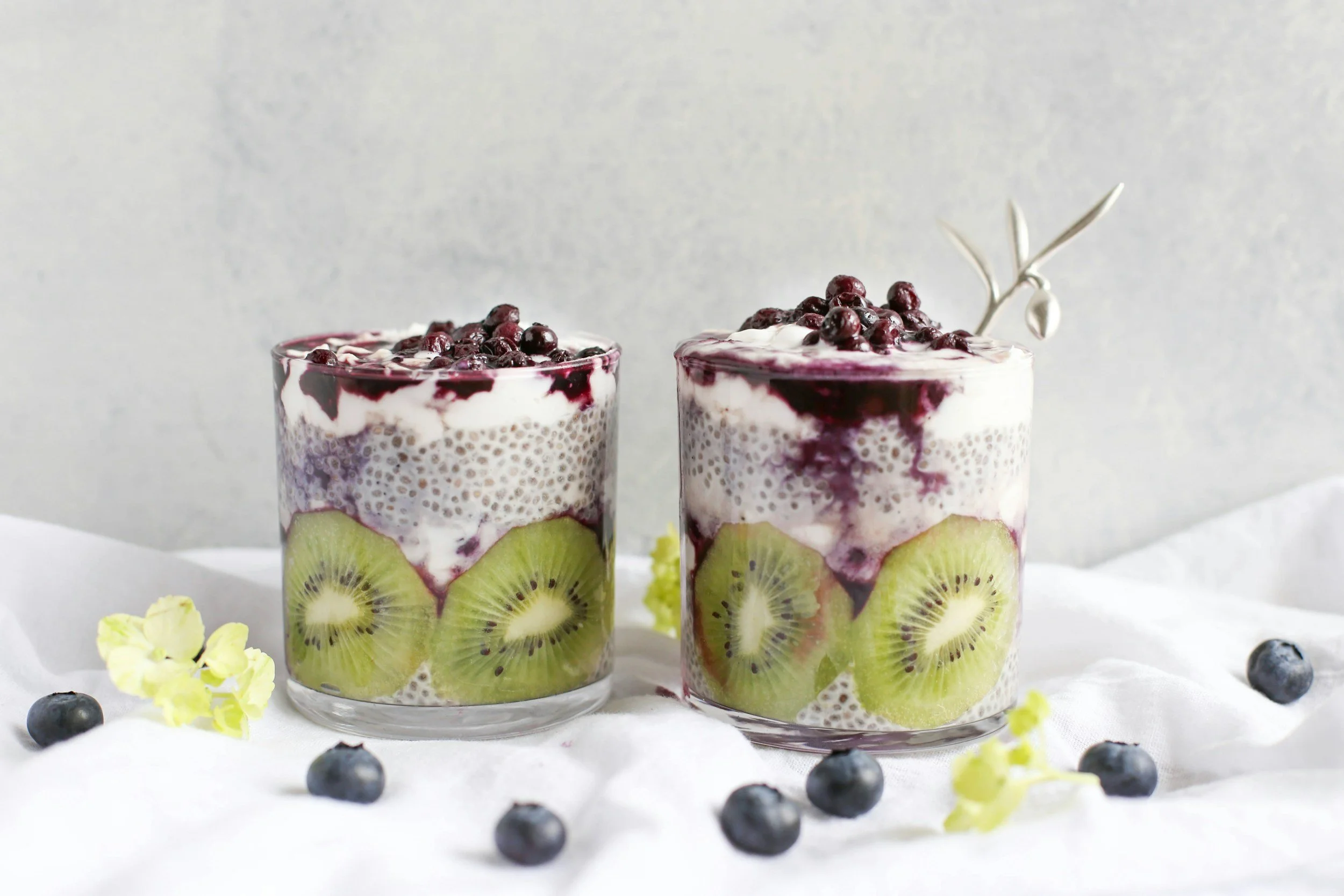7 Easy Ways to Add More Nutrients to Your Meals
If you’re looking for easy ways to add more nutrients to your meals without overhauling your whole diet, you’re in the right place.
You probably already know this about me, but I don’t believe that restrictive diets are sustainable in the real world. The healthier, more practical approach is to weave nourishing choices into your daily meals without depriving yourself of the foods you love. There are numerous ways to develop healthy habits that enhance your nutritional status and support your body, while keeping meals enjoyable and flexible.
If you’re looking for easy ways to add more nutrients to your meals without overhauling your whole diet, you’re in the right place. Below you’ll find simple ways to boost nutrition. Tips you can use in everyday cooking to make meals more satisfying, nutrient-rich, and family-friendly.
I’ve included ideas for how you’d actually use each food, plus recipe inspiration to get you started.
1. Add Collagen Powder for a Quick Protein Boost with skin-supporting benefits
Why it helps: Collagen provides a reliable boost of protein for those busy mornings and supports connective tissue and skin health. While it’s not a complete protein on its own, it’s a convenient way to increase daily protein intake when mornings feel rushed.
How to use:
In your morning coffee or tea: whisk in 1–2 scoops (as directed on the product you choose). If you want a milder flavour, start with 1 scoop and adjust.
In smoothies: blend collagen powder with yogurt, fruit, greens, and another protein source like hemp seeds or Greek yogurt.
In oatmeal: stir a scoop into hot oats along with nuts and seeds for texture and staying power.
Product note: Organika Health collagen powder is unflavored, making it easy to add without altering taste. If you’re pairing with a discount, use codes provided by the brand or your retailer (e.g., LIZ25 for 25% off where advertised).
Example recipes:
Collagen coffee smoothie: coffee + collagen + banana + almond milk + a pinch of cinnamon + dash of vanilla.
Creamy overnight oats with collagen: rolled oats, Greek yogurt, collagen, blueberries, chia seeds, and a splash of milk.
2. Fold shredded veggies into your recipes to boost fibre, vitamins, and natural sweetness
Why it helps: Shredded vegetables are one of the easiest healthy add-ins for everyday meals—they boost fibre, vitamins, and antioxidants without changing flavour much.
How to use:
In baked goods: fold shredded carrots into muffins or quick breads for moisture and sweetness.
In grain bowls: mix shredded carrots or zucchini into quinoa or rice bowls for colour and nutrition.
In savoury dishes: add shredded vegetables to meatballs, burgers, or veggie patties to boost moisture and nutrition.
Example recipes:
Carrot-zucchini muffins with oats and walnuts
Oatmeal or banana bread boosted with shredded carrot for extra moisture and nutrition
3. Use beans and legumes for fibre, minerals, and plant-based protein
Why it helps: Beans are a powerhouse of fibre and minerals like iron, magnesium, and potassium. They’re versatile and can be blended, tossed, or simmered into many dishes to make them more nutrient-dense.
How to use:
In soups and stews: blend or crush beans into creamy textures, or simply stir whole beans into brothy soups.
In meat dishes: blend beans with ground meat for a protein- and fibre-rich patty or meatloaf.
In salads and bowls: toss chickpeas, black beans, or lentils into salads, grain bowls, or burrito bowls.
In snacks: roast chickpeas with olive oil, salt, and paprika for a crunchy, fibre-rich snack.
Example recipes:
Creamy white bean soup with garlic and herbs
Black bean and quinoa burrito bowls
4. Cook with bone broth instead of water for a richer flavour and more protein
Why it helps: Replacing water with broth (bone broth for extra minerals) when cooking grains like rice, quinoa, or barley can boost protein, minerals, and flavour. A bone broth powder can be a convenient way to go if you don’t want to make your own.
How to use:
Grains with bone broth: cook rice, quinoa, or barley in bone broth instead of water; stir in herbs at the end.
Soups and sauces: use broth as a base to deepen flavour and increase nutrient density.
Quick flavour boost: add 1–2 tablespoons of bone broth powder to a pan while sautéing veggies for a savoury boost.
Product note: Organika Health bone broth powder provides about 15g of protein per serving; combine with your usual grains for a satisfying protein lift. Use codes when available (e.g., LIZ25 for 25% off).
5. Sprinkle nutritional yeast for a savoury boost with B vitamins and umami
Why it helps: Nutritional yeast adds a cheesy, umami flavour to dishes while delivering B vitamins (especially B12 when fortified) that support energy metabolism and nervous system health.
How to use:
In soups and broths: stir in nutritional yeast toward the end of cooking for a cheesy depth.
On roasted vegetables: sprinkle over vegetables for a quick flavour upgrade.
In sauces and dressings: whisk into vinaigrettes or creamy sauces for extra savoriness and nutrition.
Example recipes:
Nourishing lentil soup with nutritional yeast finish
Roasted broccoli with lemon zest and nutritional yeast
Popcorn with olive oil, salt and nutritional yeast
6. Swap in cauliflower rice for extra veggies
Why it helps: Cauliflower rice adds bulk and fibre with fewer calories, making it one of the easiest nutrient-dense meal ideas for busy nights.
How to use:
As a rice substitute: steam or sauté cauliflower rice with a bit of olive oil, garlic, and herbs; mix into bowls for extra vegetable content.
In stir-fries: combine with your favourite stir-fry ingredients for a lighter base.
In fried rice: use cauliflower rice as the base and add peas, carrots, and scrambled eggs or tofu.
7. Add seeds like chia, flax, hemp, sesame, and more for fibre, omega-3s, and minerals
Why it helps: Seeds are compact nutrition powerhouses. They add healthy fats (omega-3s in flax and chia), fibre, protein, and minerals like magnesium and calcium. They also improve satiety and digestive regularity.
How to use:
Seed boosters: sprinkle a tablespoon of chia, flax, hemp, or sesame seeds onto yogurt, oatmeal, salads, or soups.
Texture and nutrition: blend seeds into smoothies or use ground flax/chia as a gluten-free binder in baking.
Flavour and crunch: mix sesame seeds into stir-fries or roasted veggies for a toasty note.
Example recipes:
Chia pudding with almond milk, berries, and a sprinkle of flax
Ground flax in banana muffins for extra fibre and protein
Hemp-seed yogurt bowls with honey and fruit
A few practical tips to make these changes sustainable
Start small: pick 1–2 of these easy ways to add more nutrients to your meals this week. Your future self will thank you.
Plan ahead: batch-prep shredded veggies, cook a batch of beans, and have craving-proof proteins ready.
Keep it simple: you don’t need to overhaul every meal tonight. Build on what you already enjoy.
FAQ’s:
Q1: What are some quick ways to add more nutrients to everyday meals?
A: Try adding collagen to coffee, sprinkling seeds on salads, stirring shredded veggies into sauces, or cooking grains in bone broth. These small swaps can make a big impact.
Q2: How can busy moms make meals more nutrient-dense without extra prep?
A: Keep nutrient-rich staples on hand—like canned beans, pre-shredded veggies, bone broth powder, and nutritional yeast. They work with the meals you already make.
Q3: What are the best nutrient-dense add-ins for picky eaters?
A: Shredded carrots in muffins, blended beans in pasta sauce, cauliflower rice in stir-fries, and hemp seeds on yogurt add nutrition without changing taste or texture much.
Looking for more recipe ideas?








